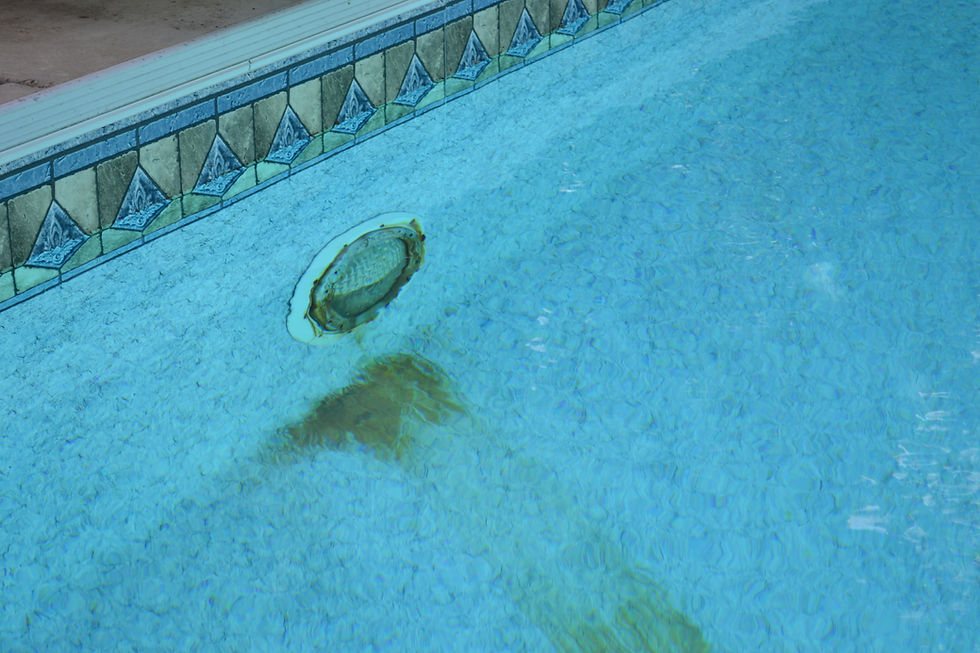Chlorine Lock
- Gabby Pugliese

- Oct 28, 2020
- 3 min read
A chlorine lock can be a common problem for pool owners. One of the most common signs you are dealing with this issue is having a strong bleach smell coming from your pool. Your pool water may also be causing itchy skin or burning eyes. In this guide below, we will discuss what a chlorine lock is, what causes it and how you can break this chlorine lock.

What is it?
It is likely that after getting your water tested, you have been told you have a chlorine lock in your pool water. There are three different chlorine readings on a water test results: Free Chlorine, Total Chlorine, and Combined Chlorine. Free Chlorine is the amount of available, working chlorine in your pool water. Total Chlorine is the combination of free and combined chlorine added together. Combined Chlorine is defined as the residual chlorine existing in water, or inactive chlorine. You always want your Free and Total Chlorine readings to be the same. When they are not the same, your Combined Chlorine reading goes up and this is what you see as a chlorine lock. This reading represents all the chlorine in your pool that is not working to sanitize your pool water and needs to be "brought back to life".
What causes it?
Heavy Rainfall: Heavy rainfall can cause a chlorine lock if the rainwater that falls into your pool is full of particulates or chemicals. Chlorine has to fight off these large amounts of contaminates and can increase your combined chlorine levels.
Too much Stabilizer: A chlorine lock can occur when you have added too much cyanuric acid, or stabilizer, into your pool water. Stabilizer is a chemical intended to protect chlorine from burning off too quickly from UV rays. If you get too much of it, it can completely block your chlorine and make it ineffective.
Unbalanced pH: Unbalanced pH in your pool water can also be a factor for a chlorine lock in your pool water. pH and chlorine go hand in hand when it comes to balanced pool water. When you pH levels are off, it can cause everything else to become unbalanced as well.
How can I fix/break this lock?
There are two ways you can break a chlorine lock in order to bring your chlorine back to working condition.
Super Chlorination: In order to break a chlorine lock, you can super chlorinate your water. This basically means adding a large amount of shock to your water in order to reactivate old chlorine. The amount of chlorine that you need to add will depend on how big your chlorine lock is, or ow high your Combined Chlorine reading is. The amount of chlorine will definitely be more than you would typically use. Sometimes it can be up to five times as much as your normal weekly amount. if you have a high enough Free Chlorine reading in your pool, you can also use a non-chlorine shock in your pool in order to break a chlorine lock. The non-chlorine shock will oxidize you water, restoring the balance and making it cleaner.
Draining: Another solution to breaking a chlorine lock is to drain out some of your pool water. Some people are scared by the number of gallons of pool shock they are required to add to break their lock. In order to lower this number, another option is to drain out some of your pool water. This automatically lowers the amount of combined chlorine in your pool and therefore; lowers the amount of chlorine you will need to break the lock.










Getting help with writing tasks is not a new thing. Students prefer professional assistance for their academic assignments. Finding the best experts who can provide excellent Assignment Help might be difficult for students. Connect with nz.greatassignmenthelp.com for your academic assignment. This reputed and reliable service provides a wide variety of support and features for writing tasks. Whether you are struggling with complex topics or meeting tight deadlines, the service is ready to assist students with any type of writing needs. They provide invaluable support in research, writing, and creating quality solutions with accuracy and originality in academic assignments. The experts in this service are able to work fast on writing tasks. They provide timely delivery and tailored solutions for your…
This is a great feature for sharing this informative message. I am impressed by the knowledge you have on this blog. It helps me in many ways. I've read this post and if I could I desire to suggest you some interesting things or suggestions. Perhaps you could write next articles referring to this article. I want to read more things about it! Thanks for posting this again
메이저사이트
That is the excellent mindset, nonetheless is just not help to make every sence whatsoever preaching about that mather. Virtually any method many thanks in addition to i had endeavor to promote your own article in to delicius nevertheless it is apparently a dilemma using your information sites can you please recheck the idea. thanks once more
스포츠토토
Looking for the best shipping company in Montreal? Fast, reliable, and affordable shipping solutions for businesses and individuals. best shipping company montreal Montreal’s best shipping company for domestic and international deliveries. Get trusted service with competitive rates.
Buy vape online in Quebec with fast shipping and great prices. Shop top vape brands, e-liquids, pods & more today! Buy vape online Quebec Quebec’s trusted online vape store. Buy vapes, e-juice, and accessories online with secure checkout and fast delivery.